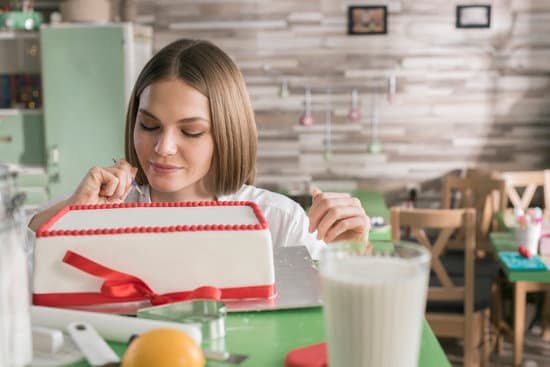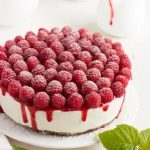How should I decorate my cake? The art of cake decorating plays a crucial role in creating a visually stunning and memorable dessert. Whether it’s for a special occasion or just to satisfy a sweet craving, the way a cake is decorated can truly elevate its overall appeal.
In this article, we will explore the different factors to consider when decorating a cake, including the occasion, theme, and personal preferences. From choosing the right cake base to incorporating color and texture, we’ll delve into the world of cake decoration and provide tips and techniques for creating beautiful and customized designs.
Cake decoration is not just about making a dessert look pretty; it’s also about adding that personal touch to make it truly special. The design of a cake can reflect the theme of an event, celebrate someone’s favorite things or simply showcase your creativity. With an array of tools, supplies, and techniques at your disposal, you can transform any plain cake into a work of art that will leave everyone impressed.
Whether you’re new to cake decorating or looking to enhance your skills, understanding the fundamentals and exploring various techniques can open up endless possibilities for creating stunning cakes. From selecting the right base to troubleshooting common challenges and adding final touches for presentation, this article will guide you through the art of cake decorating step by step. So get ready to unleash your creativity and elevate your baking game.
Choosing the Right Cake Base
When it comes to decorating a cake, the type of cake base you choose can greatly impact the final presentation and overall appearance of your creation. Different cake bases work well with various decorating techniques, so it’s important to consider which one will best suit your desired design. Here are some tips for selecting the right cake base for your decoration style:
- Buttercream cakes: Buttercream cakes are versatile and perfect for smooth or textured decorations. The buttery texture of the frosting allows for easy manipulation and can be used as a canvas for piping, sculpting, and other techniques.
- Fondant-covered cakes: Fondant provides a smooth, polished finish that is ideal for intricate designs, sculpting, and creating a flawless surface. It’s also great for creating bold colors and sharp edges on your cake.
- Naked cakes: For a more rustic or minimalistic approach, naked cakes are a popular choice. With little to no frosting on the sides, the bare layers of cake are exposed, making them perfect for simple floral or fruit decorations.
Consider the theme of the event or occasion when choosing your cake base – for example, a fondant-covered cake may be better suited for formal events like weddings, while buttercream could be more fitting for casual gatherings or kids’ parties.
Understanding how different cake bases complement various decorating techniques will help you achieve a visually stunning result while also ensuring that your cake tastes just as good as it looks. By choosing the right cake base, you set yourself up for success in creating an impressive and delicious dessert centerpiece.
Ultimately “how should i decorate my cake” all comes down not only to personal preference but also consideration of what best suits the occasion at hand.
Essential Decorating Tools and Supplies
When it comes to decorating a cake, having the right tools and supplies is essential in achieving the desired look and style. From piping bags and tips to edible decorations, each item plays a crucial role in the creative process. One of the most common questions people ask when starting their cake decorating journey is “how should I decorate my cake?” The answer lies in having the right tools and supplies at your disposal.
Piping bags are a staple in cake decorating, allowing for precise and intricate designs to be created with icing or frosting. Paired with various tips such as round, star, or petal tips, decorators can achieve different textures and patterns on their cakes. An offset spatula is another indispensable tool for smoothing out frosting or spreading it evenly on the cake’s surface.
In addition to tools, edible decorations such as sprinkles, edible pearls, and fondant accents add a delightful touch to any cake design. These decorations come in a variety of colors, shapes, and sizes, allowing decorators to personalize their creations according to the occasion or theme. When selecting these items, it’s important to consider the color scheme and overall aesthetic of the cake.
Lastly, knowing where to purchase these tools and supplies is just as important as knowing how to use them effectively. Many specialty baking stores, as well as online retailers, offer a wide selection of cake decorating items. It’s recommended to invest in high-quality tools that will last through multiple projects. With the right tools and supplies at hand, anyone can bring their cake decorating visions to life.
| Decorating Tools | Educational Decorations |
|---|---|
| Piping bags | Sprinkles |
| Tips (round, star) | Edible pearls |
| Offset spatula | Fondant accents |
Popular Cake Decorating Techniques
When it comes to decorating a cake, there are endless techniques that can elevate your dessert from ordinary to extraordinary. Whether you’re a beginner or an experienced baker, mastering these popular cake decorating techniques can take your creations to the next level. Here are some of the most popular and visually stunning techniques to consider:
- Piping: The art of piping buttercream or royal icing onto cakes in various designs, such as rosettes, swirls, or intricate patterns.
- Fondant sculpting: Using fondant to create 3D shapes, flowers, figures, and other decorative elements that add a touch of elegance to any cake.
- Edible painting: Utilizing edible food colors and paintbrushes to create artistic designs directly on the cake’s surface, allowing for complete creative freedom.
These techniques offer a wide range of creative possibilities for anyone looking to add a personal touch to their cakes. From simple and elegant designs to extravagant and elaborate works of art, mastering these techniques is essential for any aspiring cake decorator.
It’s important to note that practice makes perfect when it comes to cake decorating. Don’t be afraid to experiment with different techniques and find what works best for your individual style. With dedication and patience, you’ll soon be creating beautifully decorated cakes that leave a lasting impression on everyone who enjoys them. So next time you ask yourself “how should I decorate my cake,” consider trying out these popular techniques for a truly show-stopping dessert.
Incorporating Color and Texture
When it comes to cake decorating, incorporating color and texture is a crucial aspect of creating a visually stunning and delectable dessert. The right combination of colors and textures can elevate the overall look and taste of the cake, making it a memorable centerpiece for any occasion. In this section, we will explore the significance of color and texture in cake decoration and offer advice on how to incorporate them effectively.
The Significance of Color and Texture
Color and texture play a vital role in cake decoration, as they can significantly impact the visual appeal and flavor experience of the dessert. When choosing colors, it is essential to consider the occasion and theme of the event. Bright, vibrant colors may be suitable for birthdays or celebratory events, while softer pastel hues may be more fitting for weddings or baby showers.
Additionally, texture can add depth and dimension to the cake, enhancing its overall appearance. Whether through intricate piping designs, edible embellishments, or fondant sculpting, adding texture can create a visually stunning masterpiece.
Incorporating Different Colors and Textures
There are various techniques for incorporating different colors and textures into cake decoration. Marbling, for example, involves blending multiple shades of icing or fondant to create a marbled effect that adds visual interest to the cake’s surface. Ombre is another popular technique that involves blending varying shades of a single color to create a gradient effect.
Additionally, edible embellishments such as sprinkles, glitter dust, or edible flowers can add texture and visual appeal to the cake’s design. By experimenting with different colors and textures, decorators can create unique and eye-catching cakes that leave a lasting impression.
Expert Tips for Color and Texture Incorporation
When considering color and texture in cake decoration, it’s essential to strike a balance between aesthetics and taste. While vibrant colors may be visually appealing, they should also complement the flavors of the cake itself. Similarly, textures should enhance the overall design without compromising the taste experience.
It’s important to consider these factors when selecting color palettes and decorative elements. Experimenting with different combinations of color and texture can lead to stunning results that truly showcase creativity in cake decorating.
Personalizing With Themes and Designs
Decorating a cake is not just about making it look beautiful; it’s also a way to personalize the dessert for the occasion or recipient. When considering how to decorate your cake, it’s important to choose a theme or design concept that reflects the purpose of the cake, whether it’s a birthday celebration, wedding reception, or other special event.
Personalizing with themes and designs allows you to create a unique and memorable cake that will leave a lasting impression on those who see and taste it.
One of the first things to consider when personalizing a cake with a theme or design is the recipient’s preferences. Whether it’s their favorite colors, hobbies, or interests, incorporating these elements into the cake decoration adds a thoughtful touch. For example, if the cake is for someone who loves gardening, incorporating floral designs and earthy colors can create a personalized look.
Another aspect to consider when personalizing with themes and designs is the type of event or celebration. A child’s birthday cake may call for whimsical and colorful design elements, while a wedding cake may feature elegant and romantic details. Understanding the tone and purpose of the event will help guide your decision-making when choosing how to decorate the cake.
When deciding how to personalize your cake with themes and designs, don’t be afraid to think outside the box. Consider unique design concepts that haven’t been done before or put a creative spin on traditional ideas. This level of personalization will make your cake truly stand out and be remembered by all who get to enjoy it.
| Theme/Design Element | Personalization Tips |
|---|---|
| Recipient’s Preferences | Incorporate favorite colors, hobbies, or interests |
| Type of Event/Celebration | Consider whimsical designs for children’s birthdays; elegant details for weddings |
| Creative Concepts | Think outside the box; put a unique spin on traditional ideas |
Troubleshooting Common Decoration Challenges
Cracked Fondant
One of the most common challenges when working with fondant is the risk of cracking. This can happen if the fondant is rolled too thin or if it dries out before it’s placed on the cake.
To prevent cracking, make sure to roll out your fondant to the appropriate thickness, about 1/8 inch, and work quickly to cover the cake once it’s been rolled out. If you do encounter cracks, use a small amount of vegetable shortening to gently smooth them out with your fingers.
Smudged Icing
Dealing with smudged icing can be frustrating, especially when working on intricate designs or patterns. To avoid smudging, make sure that your cake layers are completely cooled before applying any frosting. If you notice that your icing is starting to smudge, stop and let it chill in the refrigerator for a few minutes before continuing. Using a bench scraper or offset spatula can also help create smooth and even surfaces without disrupting the icing.
Uneven Layers
Having uneven layers in your cake can affect both its appearance and taste. To ensure that your cake layers are even, use a long serrated knife or a cake leveler to trim any domed tops and create uniform levels for stacking. If you find that your layers are still uneven after assembling the cake, try using a thicker layer of frosting between each layer to fill in any gaps and create a more balanced look for your finished cake.
Even experienced bakers encounter decorating challenges from time to time. By being prepared to troubleshoot these common issues, you can ensure that your final cake decoration turns out beautifully and impresses everyone who sees it.
Final Touches and Presentation
In conclusion, cake decoration is truly an art form that allows for creativity, personalization, and the opportunity to make a lasting impression. Whether it’s a birthday, wedding, or any special event, the way a cake is decorated can elevate the overall experience for both the baker and the recipient. By considering factors such as theme, occasion, and personal preferences in conjunction with the right cake base and essential tools, anyone can create a stunning and delicious masterpiece.
When contemplating how to decorate a cake, it’s important to remember the significance of final touches and presentation. These elements can truly elevate a beautifully decorated cake to new heights. Adding embellishments such as fresh flowers, edible sprays, or intricate piping designs can bring a sense of sophistication and elegance. Coupled with thoughtful presentation styling, such as displaying the cake on a decorative stand or incorporating themed props, the finished product becomes not only visually stunning but also memorable.
Ultimately, when asking “How should I decorate my cake? “, it’s vital to embrace the creative process and allow for personal expression.
Whether experimenting with different decorating techniques or incorporating unique color palettes and textures, each cake has the potential to be a work of art. With patience, practice, and attention to detail in every step of the decorating process – from choosing the right base to adding those final touches – anyone can create a dazzling and delectable masterpiece that will be cherished by all who have the pleasure of enjoying it.
Frequently Asked Questions
What Is the Best Way to Decorate a Cake?
The best way to decorate a cake is to start with a smooth, even layer of frosting as a base. Then, use piping bags and different tips to create borders, flowers, and other designs. Adding edible decorations like fondant or chocolate can also elevate the cake’s appearance.
What Are the Best Tips for Cake Decorating?
The best tips for cake decorating include using the right tools such as offset spatulas, piping bags, and various icing tips. It’s also important to work with chilled cakes to prevent crumbs from mixing into the frosting. Additionally, practicing different techniques like piping and fondant sculpting can improve your decorating skills.
What Are the 7 Different Cake Decorating Techniques?
There are seven different cake decorating techniques that include piping, frosting flowers, using fondant to create shapes and designs, stenciling with powdered sugar or cocoa, creating intricate patterns with royal icing, airbrushing for a smooth and even color application, and sculpting edible decorations like animals or figures out of modeling chocolate or gum paste.
Each technique has its own unique effect on the final look of the cake.

Welcome to our cake decorating blog! My name is Destiny Flores, and I am the proud owner of a cake decorating business named Cake Karma. Our mission is to provide delicious, beautiful cakes for all occasions. We specialize in creating custom cakes that are tailored specifically to each customer’s individual needs and tastes.





